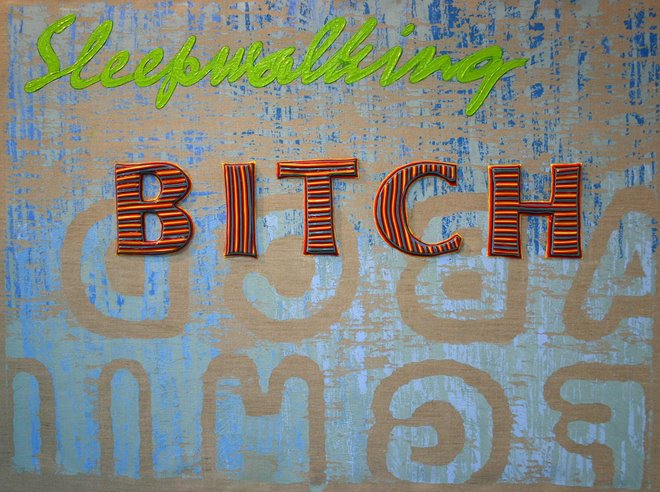Prologue: Goldsmith’s College, London, is
122 years of age. While Slade, an equally mature London art school is 145 years
old. The School of Fine Arts, Canterbury, has been in continuous operation for
130 years.
The globally omnipresent mythos of ‘not enough’ and its just-as-ubiquitous economic-nostrum
(the austerity-cure) are widely subscribed-to dogma. Pure belief: unassailable
faith in the primacy of monetary capital creation -
over and above every other human enterprise. I would suggest the monomaniacal
pursuit of statistical GDP, expressed as the one-eyed reapportionment of
existent public capital, to things exclusively charged with creating yet more
monetary capital, willfully disregards a raft of historically valued things -
things such as social/cultural capital. The big lie, the god of, Not enough and its philosophical
disregard, or write-down, of the historically high value, appreciated to the
arts and culture, heralds an ideologically blinkered period of social
engineering. Or, rather, a Dark-Ages 2.0, of social/cultural dismantlement to come.
A reactionary, faith-based, belief, that wills such wanton dismantlement, requires blind faith, faith that a fictionally over-spent
(actually reapportioned) public purse is the root cause of, and rationale for, reducing
whatever corporate-captured politicians want to characterize as budget-stretching
cultural frills. Rather than viewing time-proven arts as the foundational public
good they have historically been and are. As if forgettable business
enterprise, with its mostly symbolic, ephemeral, financial transactions are how
generations, now and in future, will ‘bank’ who they were, are, or may wish to
be remembered. And, perhaps, respected as something more than money-changers.
Nobel Prize winning economist Paul Krugman,
suggests the not enough dogma is, in
footnoted fact, the professed evangelical belief of self-serving privateers - their
synod being the ‘free-market’ Chicago School of economics. Privateers for whom
austerity is a religion and for whom the efficient, tax-structured, unregulated-and-tax-subsidized,
movement of publicly-underwritten wealth - from public to private hands - is an
article and act of faith.
My use of the trope ‘publicly underwritten wealth’ alludes to publicly financed
infrastructure such as: education, transport, government funded and regulated public
health & safety regimes, and government facilitated international trade …
among others – without which private business, high-income individuals, and international
corporate elite would not so easily prosper and accrue the massive cash reserves
they currently hoard.
Hard statistics show the cost-burden of
public-infrastructure – in the past number of decades – has shifted
dramatically from wealthy (corporate and private, high-earners) onto the middle-class
and working poor’s increasingly skinny shoulders. However, oddly enough, the relative
scale of received benefits, to the so-called middle class, and working poor, from
public infrastructure (affordable tertiary education, affordable housing, public-health
maximization, subsidized arts) have hardly been commensurate with the shifting
tax-burden they bear.
What has increased, however, is the volume
of sermonizing and numbers of sermonizers preaching the religion of public austerity
as catalyst for private profit. Preaching self-righteously of reduced
expectation, shared burden, hard realities and hard choices. Those preaching are
rarely, if ever, on the receiving end of tough-love prescriptions they propose.
In today’s silo-shaped, business-modeled,
universities there are austerity-pulpits aplenty – staffed by ambitious executive
administrators. The reallocation of public money in the tertiary sector has
similarly moved. Shifting from the long-admired public good of humanities, to academic
sectors populated with private profit-takers (or makers) depending on your
ideological point of view. Making universities, in essence, the exclusive
research and development arms of corporate manufacture and business.
The public’s money has been, and continues
to be, business-purposed away from the perceived ‘soft’ subjects of arts and
humanities. Intellectual disciplines, long-esteemed (in the course of human
history) as historically uninterrupted public testament to, and stores of,
intangible, but socially effective, human, virtue. Public education dollars –
diverted, re-purposed, reallocated, into amoral ‘business friendly’, hard subjects; such as engineering and
science. ‘Hard-discipline’ vocational areas, at Canterbury, are awash, as I
write, with actual, un-spendable surpluses - while just across campus, programs
and students, of arts & humanities, go to bed ‘hungry’. Colleagues in
Engineering, I should note, are just as scandalized by the economic disparity
and surplus.
City centers, municipalities, regions, and
nation-states (driven by the power-elite’s appetite for the arts-as-entertainment
and as civic status-symbol) still budget, subsidize, and vie with geopolitical
rivals, for ‘the arts’. But now, our universities - originally designed as a kind-of
creative castle-keep, sanctuary, for creators of intangible but recognizably
valued ideas and objects - increasingly seek to divest themselves of their
historical charge, and, in the place of so-called pure-knowledge-creation, seek
exclusively to harbor, and further, what executive administrators (and their
political overlords) see as bankable, mercantile, technical enterprise.
Of course some skeletal ‘core’ arts and
humanities will be retained; served to the student body, as a side-dish, as a garnish,
as a way to provide jumped-up ‘wealth creators’ with a ‘core’ understanding of
socially recognized cultural markers of class-gentility … providing future
‘masters-of-the-universe’ with a feel
for the arts. For even the university-as-a-business understands the importance,
or at least class-desirability of, gentrifying, with the help of the arts, the scions
of commercial wealth it helped nurture. Nurture with public money.
University-as-a-business understands, of
course, that at the end of a long day of business enterprise, even a self-starting,
hard-charging technocrat, or captain of light-industry, wants to let his
(mostly His) hair down … with a little help from (in proper time-and-place, of
course) cultural ‘long hairs’. I mean, really,
what would all the toil of business-innovation, and its attendant commerce,
really amount to without the house on the hill. The hard-earned place in the
world where one repairs: to regard one’s trophy plastic arts – on one’s expansive
white wall – to thumb an anthological volume of verse, purchased in one’s youth
for the Uni. literature-survey course, to cue the Schubert impromptu one became
familiar with in music appreciation 101.
Now what is this essay, so far, but a
collection of allusive generalizations, without specific, local, examples? Or, for that matter, international examples.
Here’s now is a regional specific.
Something plucked, from an overgrown farm-service town, on the Canterbury
plains – laid up against two, much more metropolitan, examples: Goldsmith’s
College, London, is 122 years of age. While Slade, an equally mature London art
school is 145 years old. The School of Fine Arts, Canterbury, has been in
continual operation for 130 years.
130 years of unbroken existence would have had
The School of Fine Arts’ generationally-sequential overseers – our Aotearoan
ancestors - seeing fit to preserve, to allocate, truly scarce resources to, an art school (no less) through two
world wars, countless nation-state police actions, domestic political regimes
and social upheavals, at least one (if not putatively two) great depressions and
inestimable numbers of financial recessions and economic reversals.
Given the current faux-austere Canterbury University,
and ruling government, mood, the institutions’ managers may well be thinking,
here and now, that our feckless forerunners – generations of responsible art
school preservationists - were simply naïve, antiquarian in thinking, forever,
somehow, behind the times, out-of-step, devoid of forward-thinking, hard-headed
business ambition and business-drive. Or we might consider that in the place of
purchasing yet another bloody, cold, potato (or artillery shell, for that
matter) the preservationists thought to buy, instead, a fucking paintbrush.
Kiwis are preternaturally interested in the
Mother Country, in its doings. Now, one
might ask, what do you reckon the U.K., London, its good Burghers do, if a passel of Neo-Liberal razor-boys
sought to slice away – with all the finesse of a whale flensing gang - at the health,
prestige, and prominence of its longest-lived (Slade & Goldsmiths) art
schools. Of schools, who like Ilam, are thought to be, in significant part,
responsible for the nation’s most recognized names in national and
international visual arts?
Shall I make another comparison? Or will
that one do?


